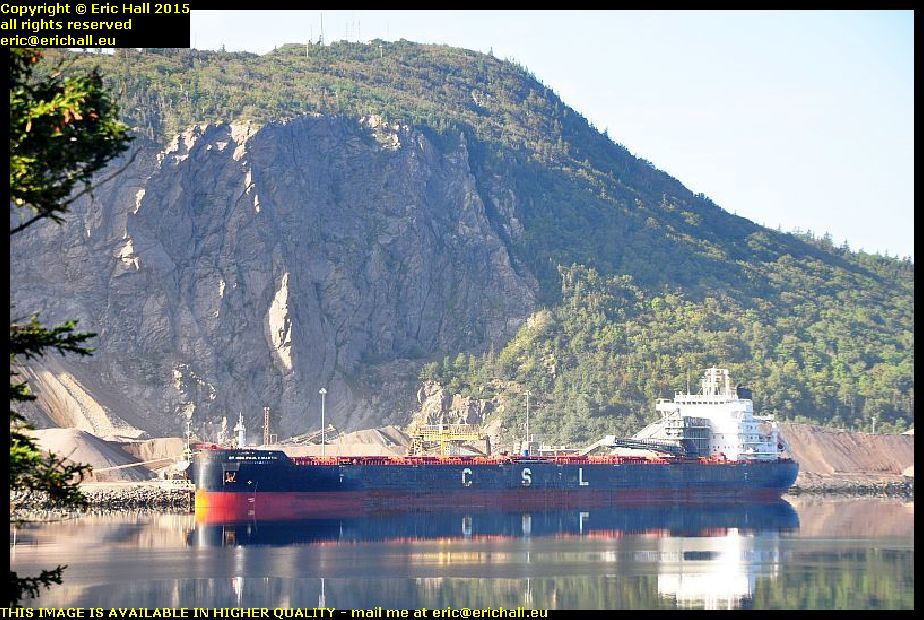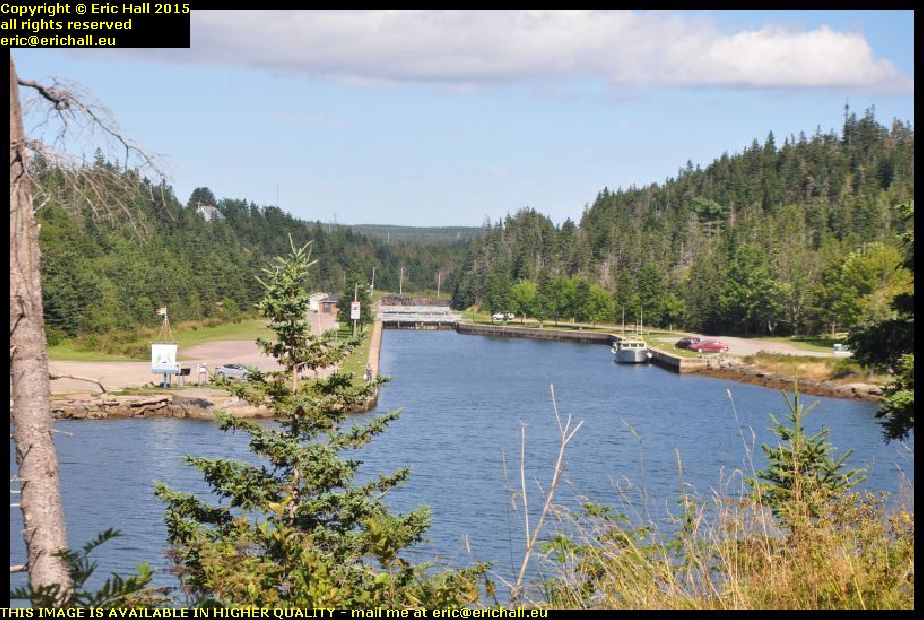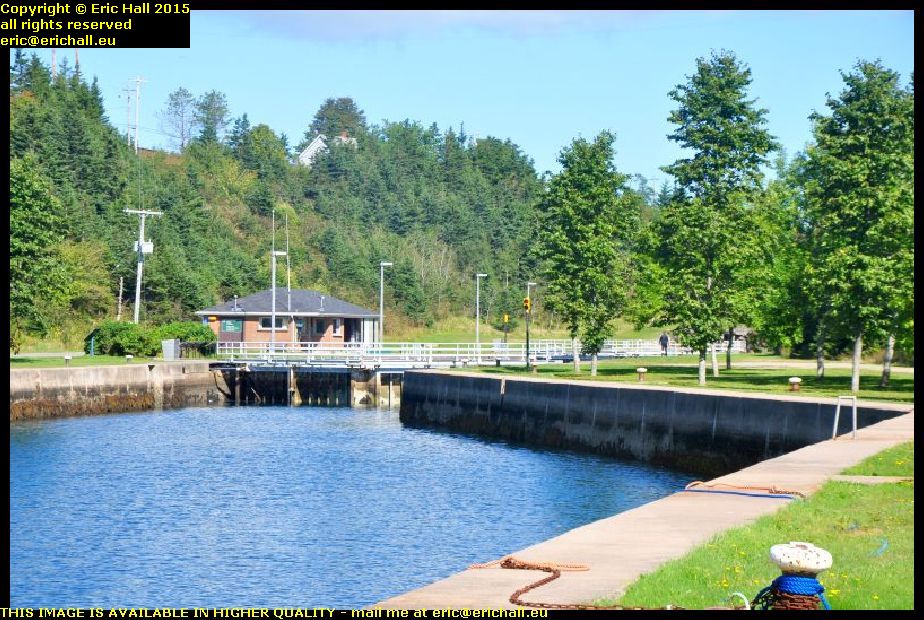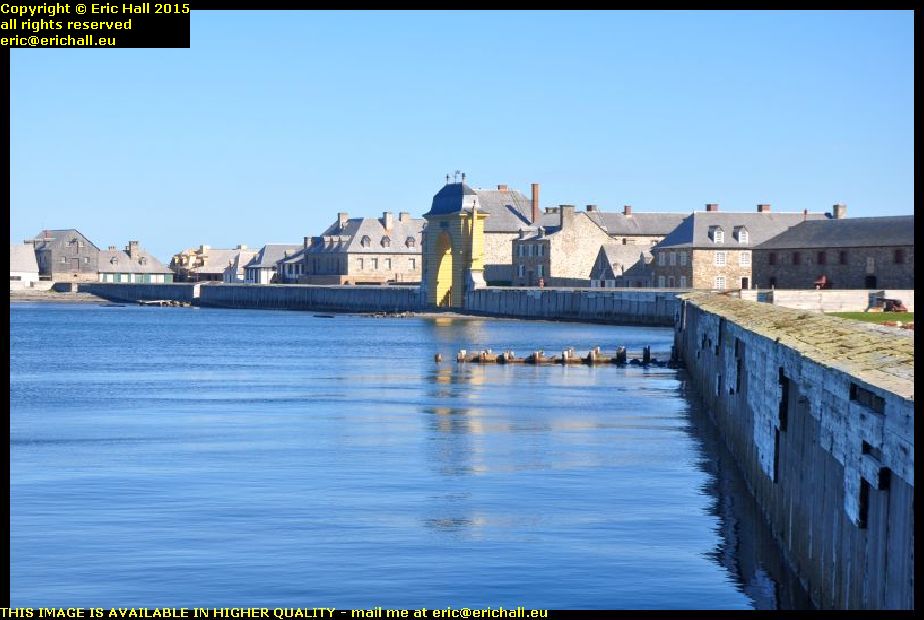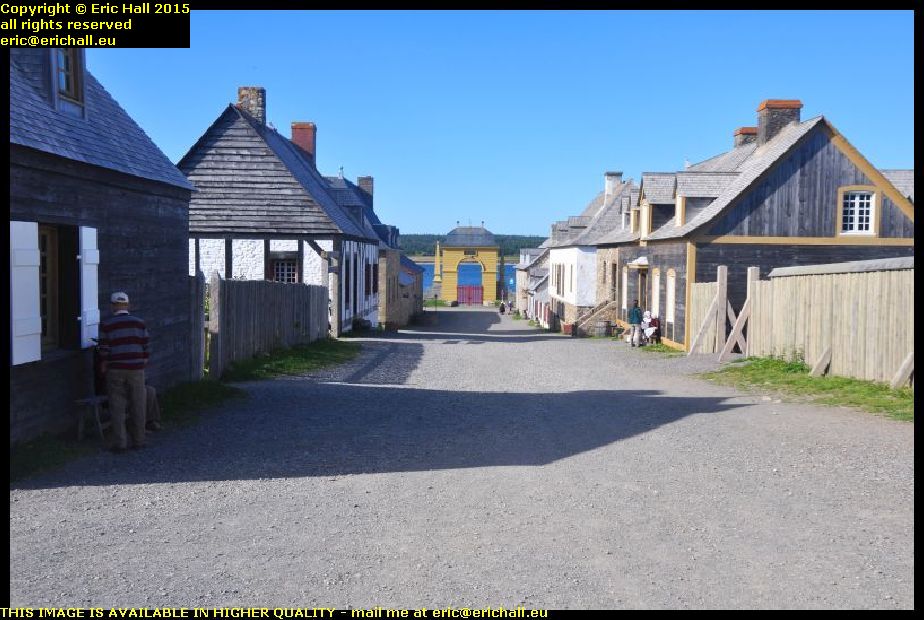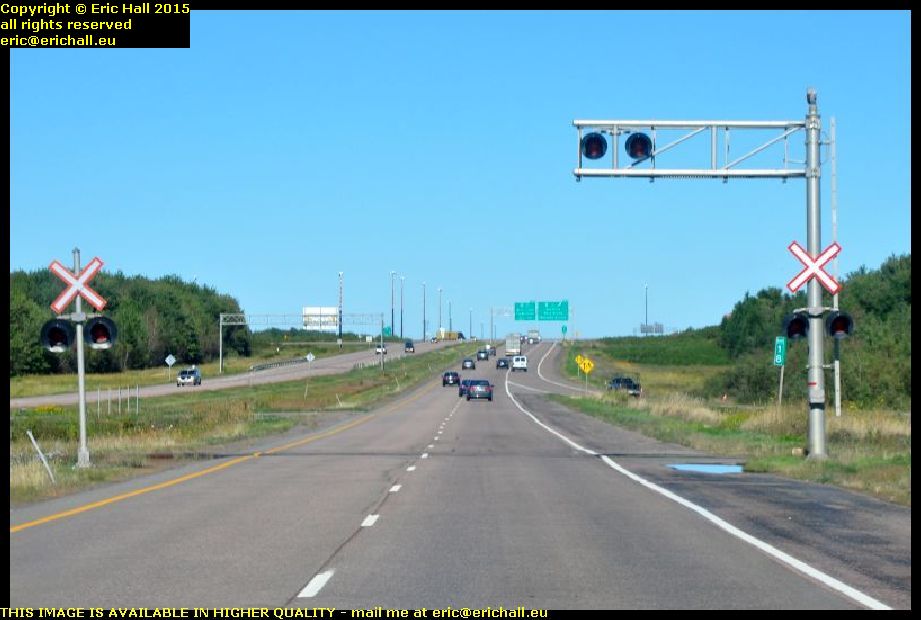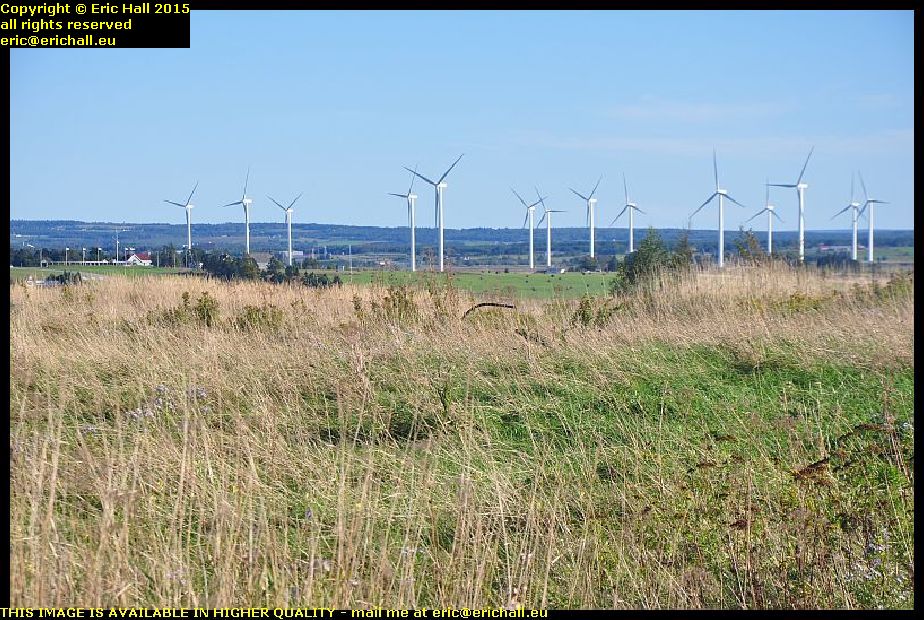Having done everything that I needed to do last night, I crawled into my sleeping back and settled down to watch a film. But it wasn’t for long. After about 15 minutes, I switched off the laptop and that was the last thing that I remembered.
I must have had a good nine hours when I didn’t feel a thing. And when I awoke, it was reasonably warm inside the truck cap, there was no condensation at all on the roof and only a few minimal traces on the walls. It seems that this idea of putting the insulation on top of the roof of the truck cap is doing its job. I’m well-impressed with this. But I’ll need some more tape though. If the plastic sacks become torn or damaged, I have plenty to replace them but I’ve run out of tape to hold everything together.
I didn’t stop for breakfast though. There’s a sailing across to Labrador at 10:30 and I want to be on it if possible and so I hit the road.
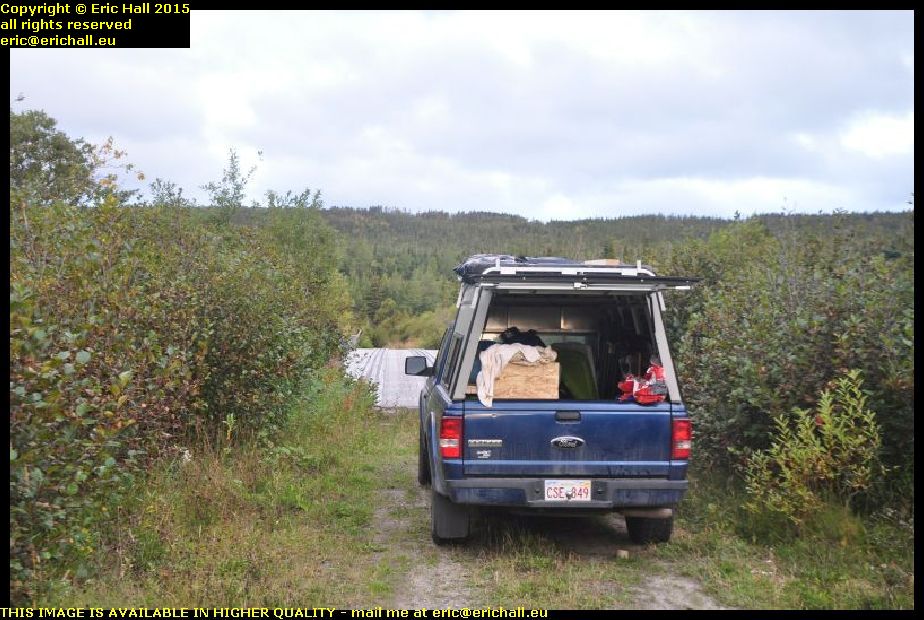 But I did take a minute or two out to take a photo of my spec for last night and Strider with his exterior insulation. You can see just what a good spec this is.
But I did take a minute or two out to take a photo of my spec for last night and Strider with his exterior insulation. You can see just what a good spec this is.
And now, a weird idea is running through my mind that if I could find a plastic sheet that is 6 feet by 4 feet, I could fit that over the top, hold it down with ratchet straps and that would make a very permanent arrangement while I’m on my travels. Something like a corrugated roofing sheet would be ideal for this.
An hour on the road found me at St Barbe and there was an enormous queue waiting for tickets to sail. I was given ticket 16 – which meant that I would be the 16th casual voyager to be added after the reserved places are loaded. And to my surprise, with the senior discount to which I’m now entitled, a 90-minute crossing with Strider costs me all of just $18:58 – eat your hearts out, you European ferry travellers!
 Having fuelled up Strider (I keep telling you that out here you need to fuel up when you can) I lined up on the quayside watching the antics of the artics loading up the trailers, and then I was squeezed on board into a little corner of the ship.
Having fuelled up Strider (I keep telling you that out here you need to fuel up when you can) I lined up on the quayside watching the antics of the artics loading up the trailers, and then I was squeezed on board into a little corner of the ship.
And poor Apollo. As she steamed in, I couldn’t help noticing that she’s looking every day now of her almost 50 years and she can’t be long for this world now. The inside is pretty rough too, and I’d have taken a photo of what I meant, except that Bane of Britain here seems to have forgotten to bring his camera with him up into the lounge.
But now, after a heary breakfast of coffee, four rounds of toast and a plate of hash browns, I’m ready for anything. Including a couple of chats that I had had, one with a German guy in an ancient New-Brunswick-registered Dodge Caravan from Woodstock (the Caravan, not the German) with a spare wheel strapped to the top, and another older guy heading out to Goose Bay.
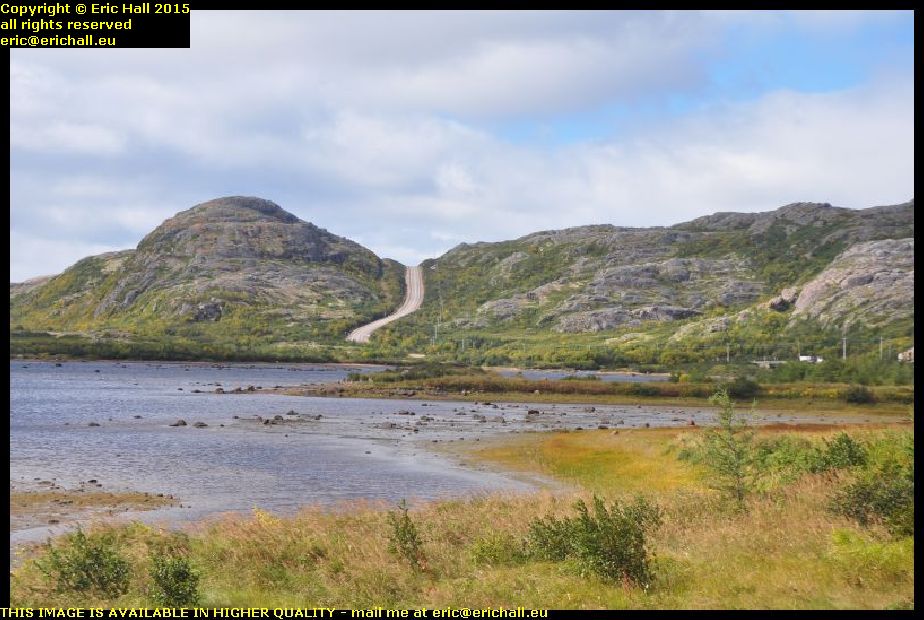 In May 2012 I’d done a tour of Quebec Highway 138 from Montreal all the way to the end at Natashquan where the road comes to a shuddering halt in the middle of nowhere.
In May 2012 I’d done a tour of Quebec Highway 138 from Montreal all the way to the end at Natashquan where the road comes to a shuddering halt in the middle of nowhere.
It’s not actually the end of Highway 138, theoretically at least, because there’s part of the Quebec coast accessible from Blanc Sablon,and the road along there is also called Highway 138. I’d driven down here last year but there was that much fog and rain that we hardly saw a thing
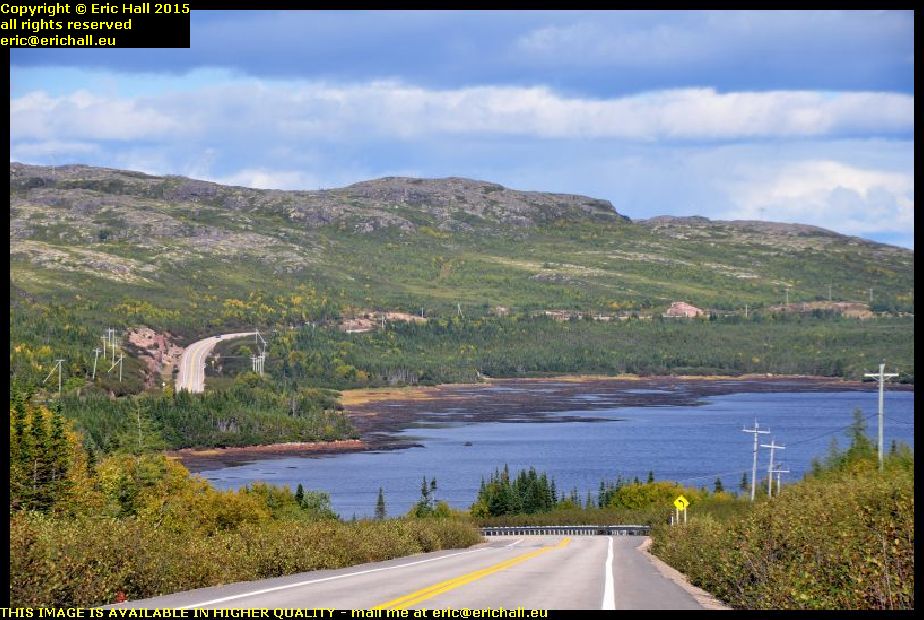 No such complaints today though. I was really lucky with the weather and couldn’t have wished for better. I’ve managed to retake all of the photographs that I took last year.
No such complaints today though. I was really lucky with the weather and couldn’t have wished for better. I’ve managed to retake all of the photographs that I took last year.
And you can see just how beautiful the road is. It doesn’t quite have the grandeur that the Trans Labrador Highway has, of course … "nothing can quite manage that" – ed … but it was a journey that I wanted to make, just to complete my Highway 138 adenture
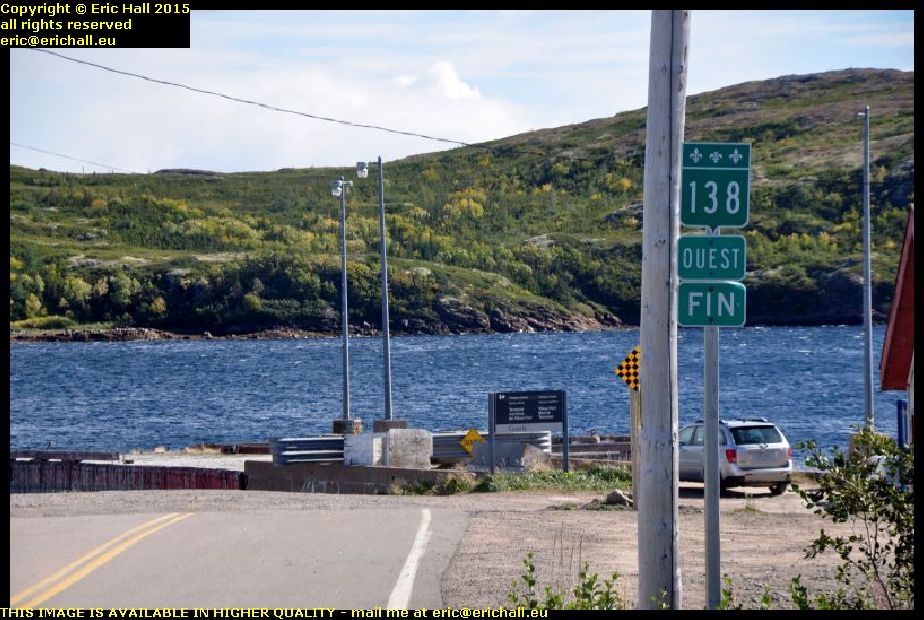 And so we arrive at Vieux Fort, known to the locals as Old Fort Bay because this is an Anglophone area, as I discovered a few years ago.
And so we arrive at Vieux Fort, known to the locals as Old Fort Bay because this is an Anglophone area, as I discovered a few years ago.
The Highway terminates at the harbour and here, right in front of us is an old quay. It’s closed off and marked “danger” so it’s clearly unused, but in view of its substantial construction, I wonder if the coastal boat that plies along the Lower North Shore used to call in here before the road through to here was opened.
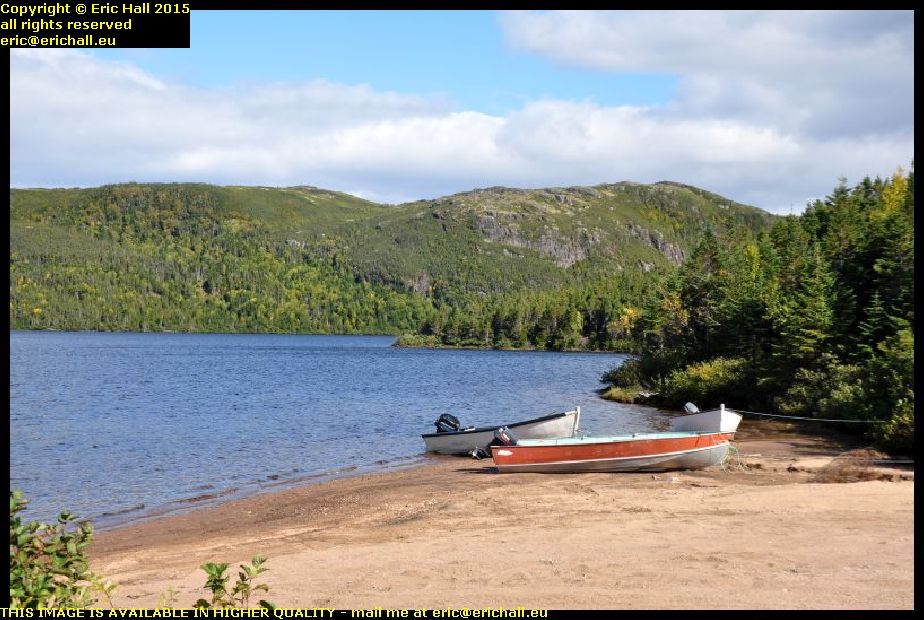 It’s not quite the end of the Highway though. If the Highway ever is extended, which won’t be in the lifetime of anyone reading this rubbish, it’ll come round the head of the bay and head west.
It’s not quite the end of the Highway though. If the Highway ever is extended, which won’t be in the lifetime of anyone reading this rubbish, it’ll come round the head of the bay and head west.
At the moment there’s a dirt highway that takes that road, and this eventually brings you down to this beautiful sheltered bay just here. When I arrive, a couple of fishermen … "fisherPERSONS" – ed … were launching a boat and setting off. This really IS the end of the road as far as I can tell, and it was a convenient place for me to stop for lunch.
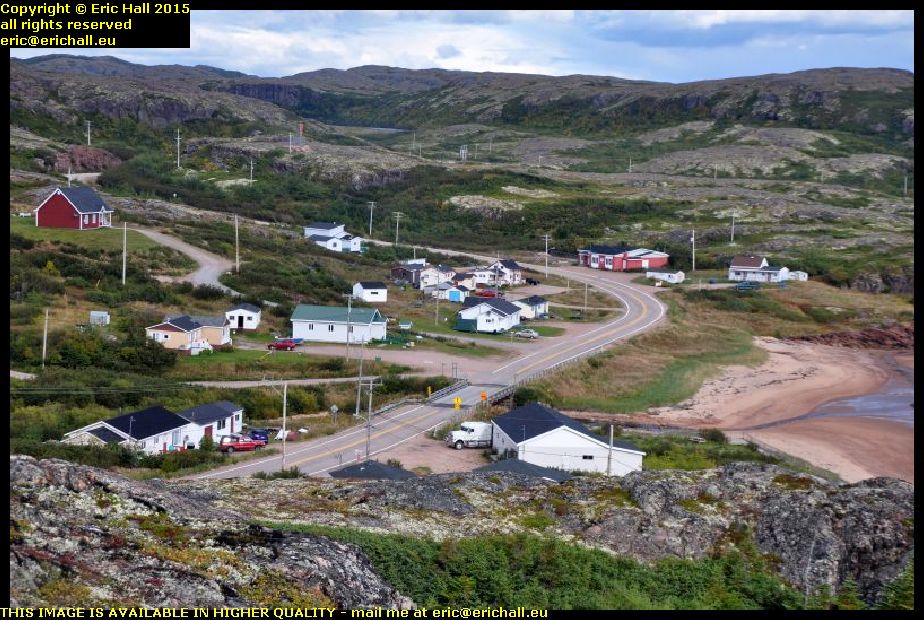 There are a few of the villages along the highway too and I took hundreds of photos of them. This is just one of them, Middle Bay.
There are a few of the villages along the highway too and I took hundreds of photos of them. This is just one of them, Middle Bay.
This is said to be the site of a Basque whaling station back in the 16th Century. There were a couple of dozen along here and the most well-known example, Red Bay in Labrador has been excavated and there’s a museum there. However, I don’t know what, if anything, has been discovered here from that period
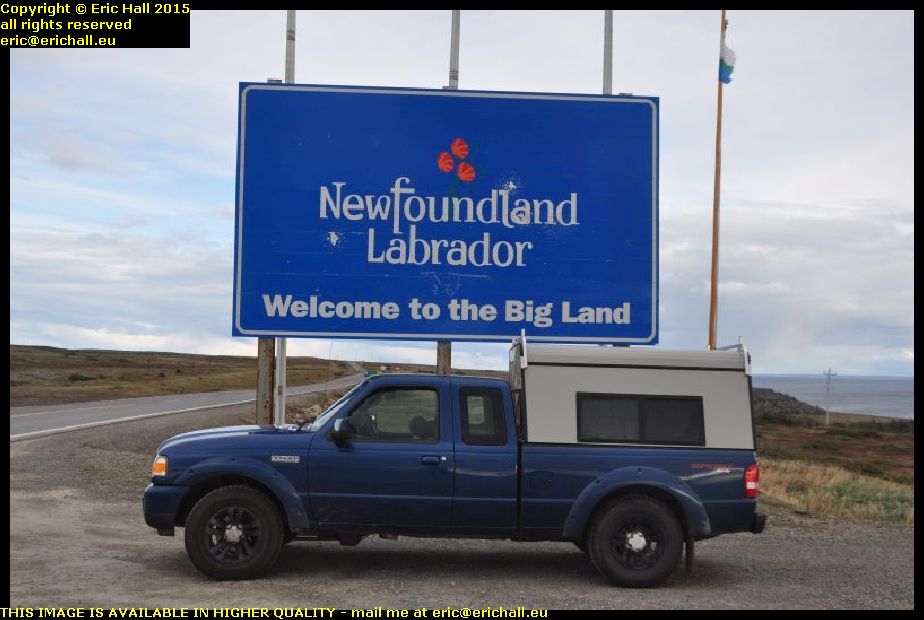 From here, I retraced my steps to Blanc Sablon and beyond towards L’Anse Aux Loups in Labrador.
From here, I retraced my steps to Blanc Sablon and beyond towards L’Anse Aux Loups in Labrador.
We had to stop though, in order to take a photograph at the border just to prove that Strider was here. This is the border today, of course, but it might not be in the future because the mayor of Blanc Sablon has said that he would like to apply to the Canadian Government to secede from the Province of Quebec and join up with Labrador. Whether the Province of Quebec will agree to releasing some of its prisoners however remains to be seen.
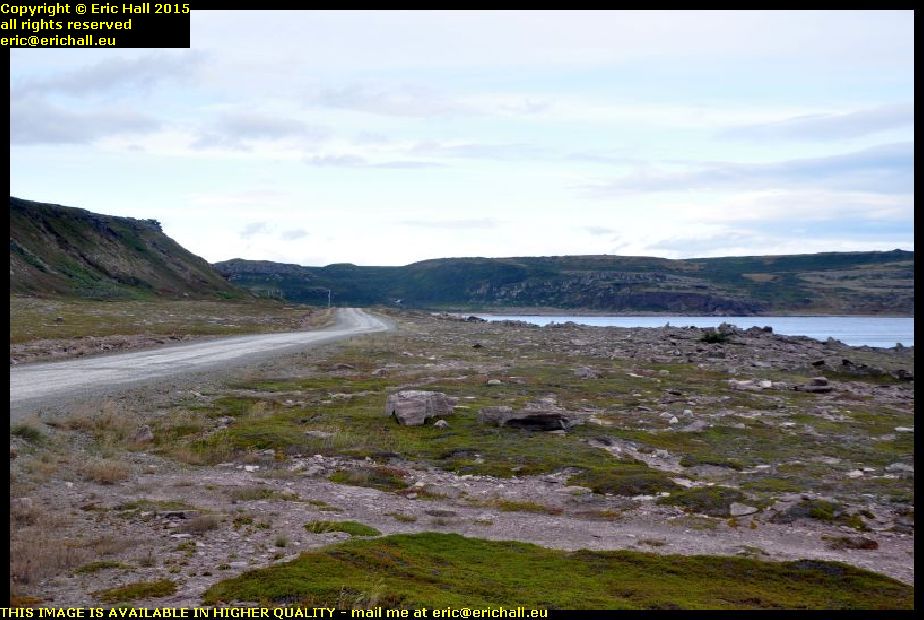 There are many French names just here. Some of them relate to the exploration of Jacques Cartier, others to the French fishing boats that came along here in the 18th Century, but many others relate to inhabitants of the Channel Islands who colonised this area.
There are many French names just here. Some of them relate to the exploration of Jacques Cartier, others to the French fishing boats that came along here in the 18th Century, but many others relate to inhabitants of the Channel Islands who colonised this area.
The old road along the coast prior to the construction of the new highway is called the Jersey Trail today, and there are all kinds of remnants and relics of the previous inhabitants along here. Excavations have taken place and many artefacts have been uncovered.
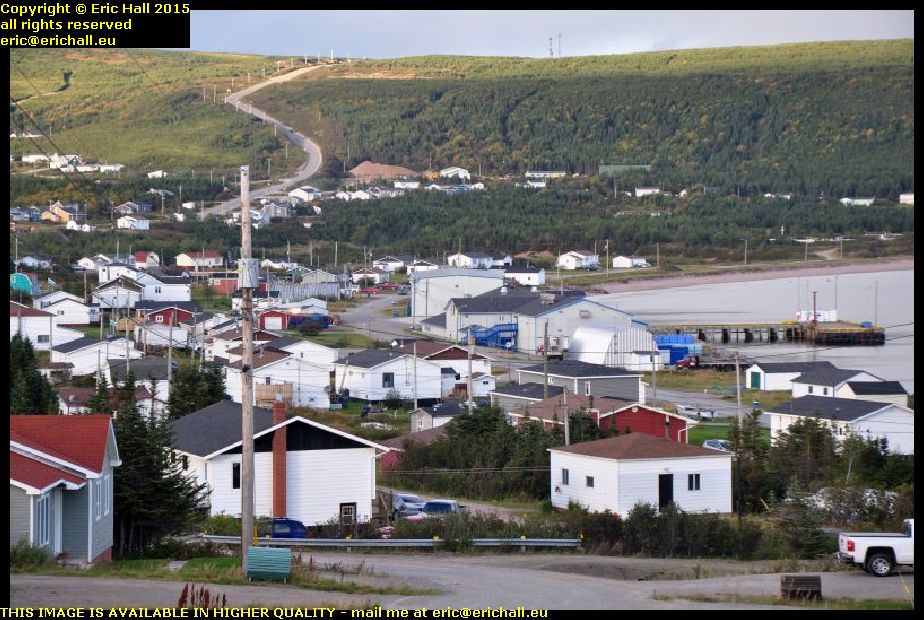 There are a dozen or so villages along here too. I missed out photographing them in 2010 because I was rushing for the ferry (I hadn’t realised that it ran on Newfoundland time, which is 90 minutes ahead of Quebec) and in 2014 I had the weather against me.
There are a dozen or so villages along here too. I missed out photographing them in 2010 because I was rushing for the ferry (I hadn’t realised that it ran on Newfoundland time, which is 90 minutes ahead of Quebec) and in 2014 I had the weather against me.
But never mind. Today, even though it was now going dark quite rapidly, I still had time to take all of the photos that I wanted to take.
 When I was here in 2010, the Labrador Coastal Drive followed the narrow valley of the Pinware River, but I did notice a considerable amount of roadworks in the area round by the County Cat Pond.
When I was here in 2010, the Labrador Coastal Drive followed the narrow valley of the Pinware River, but I did notice a considerable amount of roadworks in the area round by the County Cat Pond.
This is what they have been doing. The old road goes off to the right, but there’s a new road now going up the hill just there.
I can’t think why they have done it, though. The route along the Pinware River is beautiful, but this new route is all straight up and straight down. In 2014 I watched a huge lorry struggle up the hill in the rain and I bet he wasn’t amused.
I had planned to stop at a Guest House in Red Bay for a wash and a change of clothes, but there was no-one there when I called, and so I’ll be spending another couple of nights sleeping along the road. I found a very basic rest area and even though it was early, it was freezing cold and so I went to bed. But not before putting the big insulated sunshield across the rear window of the truck cap and wrapping the rest around the head of my bed. I’ve a feeling that I’m going to need it tonight.
